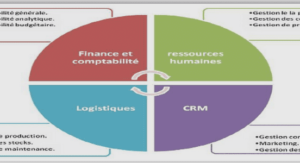Extrait du cours le marketing social au service de la santé
…….
PROCEDURE D’EVALUATION
Présentation PowerPoint d’une stratégie de marketing social (dépôt du document écrit et présentation de 15 minutes en classe, suivie d’une période 10 minutes de discussion).
– Contenu abordant chacune des sept composantes
– Respect des meilleures pratiques
– Discussion des questions d’éthique pertinentes
– Liens entre l’analyse du public et du contexte, et les objectifs ainsi que les éléments de la stratégie
– Stratégies de produit, prix et distribution incluses
– Présentation qui correspond aux attentes normales de décideurs dans les réseaux de santé
BIBLIOGRAPHIE ET LECTURES RECOMMANDÉES
– Abroms, L.C. & Maibach, E.W. (2008). The effectiveness of mass communication to change public behavior. Annual Review of Public Health, 29, 219-234.
– Albarracin, D., Johnson, B.T. & Zanna, M.P. (Eds) (2005). The handbook of attitudes. Mahwah, NJ:
Lawrence Erlbaum Associates.
– Andreasen, A., Lee, N. & Rothschild, M. (2008). Further thoughts on the 2007 AMA definition of marketing and its implications for social marketing. Social Marketing Quarterly, 14(2), 101-104.
– Andreasen, A.R. & Kotler, P. (2003). Strategic marketing for nonprofit organizations (6ed.). Upper Saddle River, NJ: Prentice-Hall.
– Andreasen, A.R. (1995). Marketing social change: Changing behavior to promote health, social development, and the environment. San Francisco: Jossey-Bass Publishers, 348 p.
– Andreasen, A.R. (2001). Ethics in social marketing. Georgetown University Press.
– Andreasen, A.R. (2002). Marketing research that won’t break the bank. San Francisco: Jossey-Bass Publishers, 277 p.
– Andreasen, A.R. (2002). Marketing social marketing in the social change marketplace. Journal of Public Policy & Marketing, 21(1), 3-13.
– Andreasen, A.R. (2006). Social marketing in the 21
st century. Thousand Oaks, CA: Sage Publications Inc., 264 p.
– Arkin, E., Maibach, E. & Parvanta, C. (2002). General public: Communicating to persuade. In: Nelson DE, et al. (Eds), Communicating public health information effectively – A guide for practitioners.
Washington, DC: American Public Health Association, pp. 59-71.
– Basil, M.D. (2001). Teaching and modeling ethics in social marketing. In A.R. Andreasen (Ed.), Ethics in social marketing (pp. 184-200). Washington, DC: Georgetown University Press.
– Bickel, W.R. & Vuchinich, R.E. (2000). Reframing health behavior change with behavioral economics.
Lawrence Erlbaum Associates.
– Caron-Bouchard, M. et Renaud, L. (1999). Pour mieux réussir vos communications médiatiques en promotion de la santé, Ministère de la Santé et des Services sociaux du Québec.
– Cheng, H., Kotler, P. & Lee, N. (2011). Social marketing for public health: Global trends and success stories. Jones and Bartlett Publishers.
– Clay Wayman, J.J., Beall, T., Thackeray, R. & McCormack Brown, K.R. (2007). Competition: A social marketer’s friend or foe? Health Promotion Practice, 8, 134-139.
…….
Le marketing social au service de la santé (148 KO) (Cours PDF)





